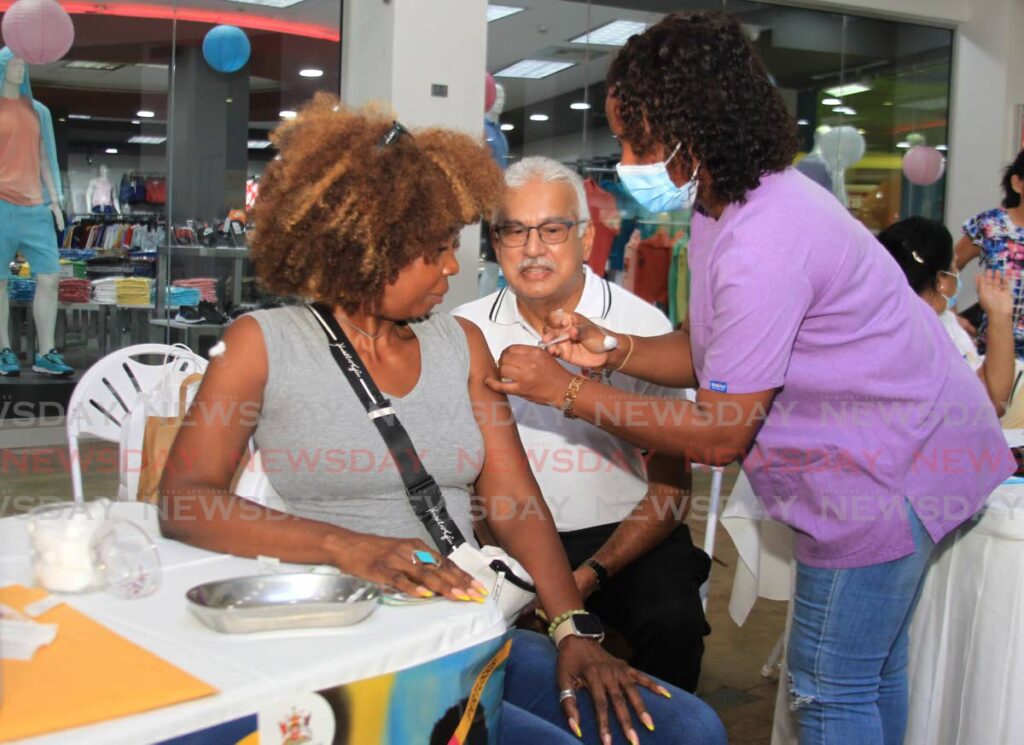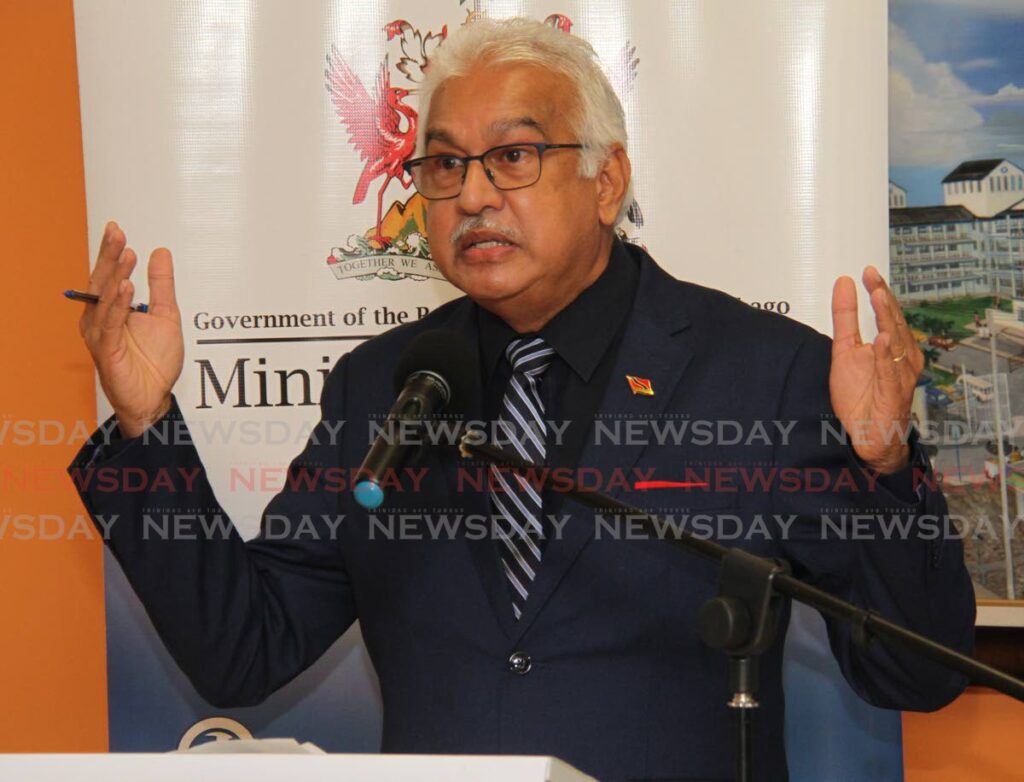Health minister post-pandemic report: Diabetes, hypertension rates high among covid deaths

Health Minister Terrence Deyalsingh reports that about 42 per cent of those who died from or with covid19 had diabetes and 49 per cent had hypertension.
The statistics were revealed at the Non-communicable Disease Symposium called 2023, Post-pandemic Reset which took place at the Radisson Hotel, Port of Spain on Saturday morning.
The last covid19 update on May 2 said there were 4,390 covid19 deaths with 4,055 of those people being unvaccinated.
Speaking to members of the media at a press conference after the symposium, Deyalsingh said its aim was to refocus health care professions at the primary health care level.
Dr Roxanne Mitchell, general manager of Primary Care at Tobago Regional Health Authority said during the pandemic, health care service delivery was reduced by 15 per cent and low-end technology, such as the telephone, was used to supplement the lack.
“I am very happy and inspired at our move towards digitalising and the use of the high-end technologies now in order to deliver health services.”
The Hearts in the Americas programme, which was launched in 2019, was a PAHO model aimed to change the way the country treated with hypertension.

Deyalsingh said, “If we are to tackle the scourge of NCDs, it cannot be tackled in a hospital. A hospital is where you go after you get something – after your foot is infected, after you get a stroke. This Hearts model at the primary care level, is to tackle NCDs before you end up with a stroke, before you end up with a diabetic foot.”
In 2019, of the 1,507 people in the programme, 497 got their hypertension under control and over the years the numbers gradually increased. In 2020, 5,356 people out of 14,663 had their hypertension under control. In 2021, it was 17,993 out of 38,051 and in 2022 it was 18,321 out of 37,935.
This equated to 33 per cent, 36.5 per cent, 47.3 per cent, and 48.3 per cent of people in the programme controlling their hypertension in 2019, 2020, 2021 and 2022 respectively.
He added that a study at the San Fernando General Hospital showed in 1998 the mortality rate for stroke patients was 29 per cent and the 56 per cent of stroke survivors were left with a permanent disability.
However, in 2021, it the stroke mortality rate was seven per cent and disability rate was 10.7 per cent.
“It means that our interventions in the area of hypertension is reaping some serious rewards.”
He added in 2022, 146,637 people were screened for diabetes and 203,310 for hypertension, and he would be getting data from the Heart programme next Tuesday on the diabetes intervention from diabetic clinics.
Dr Abdul Hamid, general manager at the North Central RHA said about 12-15 per cent of the population was diabetic meaning there were about 123,000 – 150,000 adult diabetics. Also, hypertension was prevalent in about 30-33 per cent of the population.
He said it was important to note that many people did not know they were hypertensive or diabetic so the actual numbers would be much higher.
Deyalsingh also introduced Dr Maria Clapperton as the director of NCDs and the NCDs Unit at the Ministry of Health.
She said there would soon be an energised TT Moves campaign.
“It is designed to be a behaviour change model campaign to keep persons informed and to promote healthy lifestyle practices... We will be coming again now because we really want to impress on the importance of living healthy lifestyles. We understand it is not easy to make these changes but we have to keep trying.”
Deyalsingh said before the pandemic children were drinking 25 per cent less soft drinks in schools, mostly due to the ban on sugar sweetened beverages being sold in schools. He challenged the local beverage industry to reduce the sugar content in soft drinks and one of the local brands reduced its sugar content by 50 per cent. Some other brands reduced theirs by 25-40 per cent.
“You know what the amazing thing is? Nobody picked up the difference in taste. So it means these initiatives are working. What we hope to see now is a decrease in the incidents of juvenile diabetes.”
He added that, under the US$48.5 million loan from the Inter-American Development Bank, the government installed physical equipment in every school in TT. He said there was also a programme to do the same in special education schools.
In addition, he expected to meet with representatives of quick service and casual dining restaurants on Monday to ask them to consider offering healthier options on their menus.
“We want them to be profitable as businesses. We don’t want to shut down anybody. They provide employment, they pay taxes, so that’s great. But we want them to rethink how they market to children and rethink what they are marketing to children, and to look up the possibility of offering healthy options.”


Comments
"Health minister post-pandemic report: Diabetes, hypertension rates high among covid deaths"